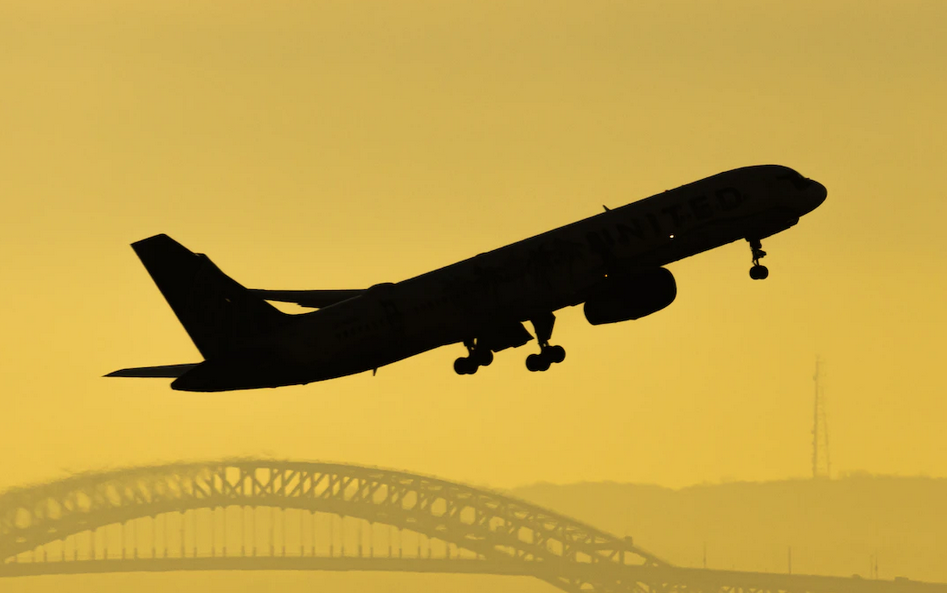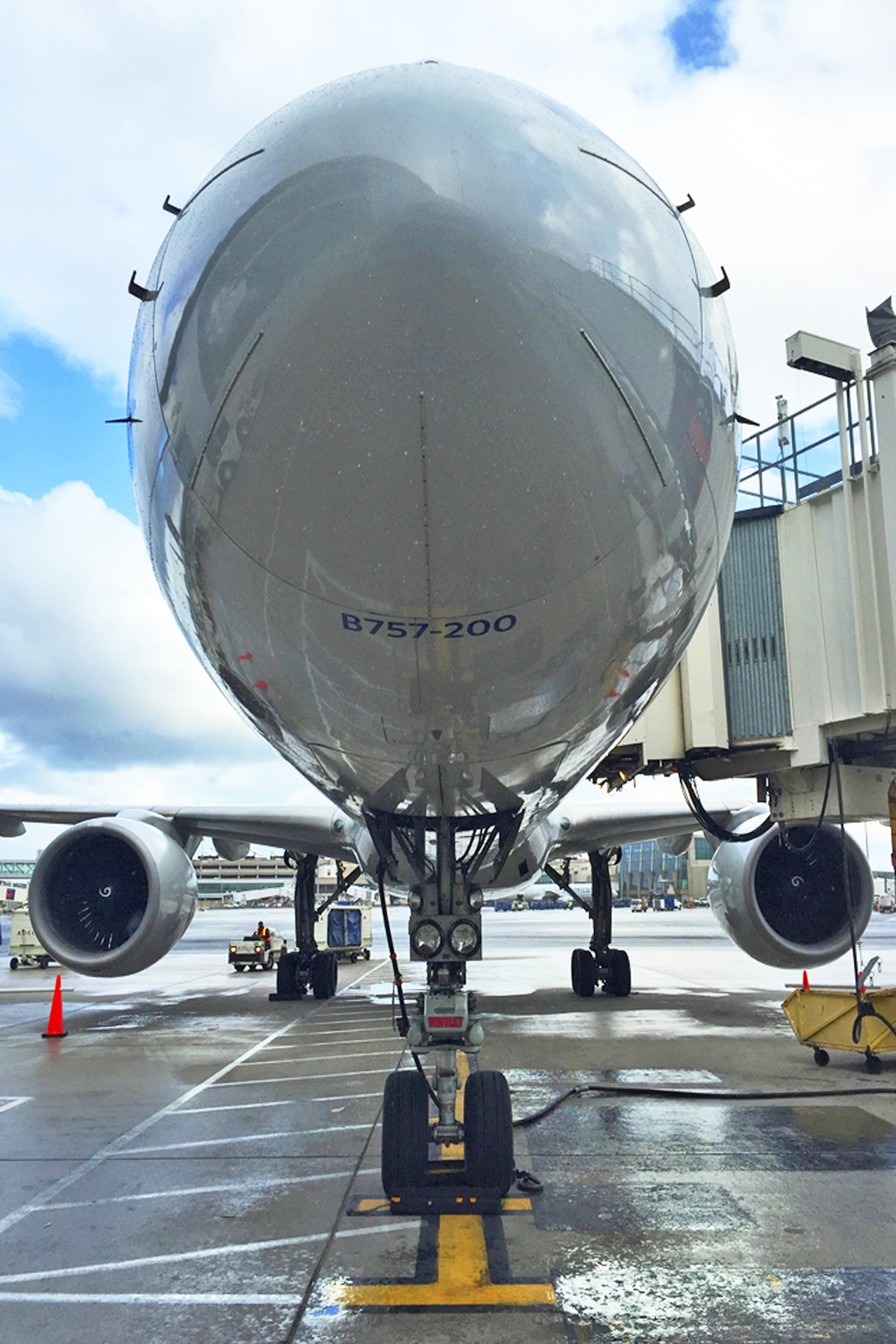Ode to the 757

September 13, 2022
WHAT BOEING NEEDS to build isn’t a fancy new long-range widebody. What it needs to build is a replacement for the 757.
When it debuted in the early 1980s, the twin-engined 757 was ahead of its time, and it went on to sell quite well until the production line closed fifteen years ago. By now the plane is — or should be — obsolete. Indeed it’s rare to spot a 757 outside of the United States. But here at home it remains popular, a mainstay of the fleets at United, Delta, FedEx and UPS, who together operate over two-hundred of them. They’ve kept the plane on their rosters so long for good reason: its capabilities are unmatched, and there’s nothing that can replace it.
The 757 is maybe the most versatile jetliner Boeing has ever built — a medium-capacity, high-performing plane that is able to turn a profit on both short and longer-haul routes — domestic or international; across the Mississippi or across the North Atlantic. The 757 makes money flying between New York and Europe, and also between Atlanta and Jacksonville. United and Delta have flown 757s from their East Coast gateways on eight-hour services to Ireland, Scandinavia, and even Africa. You’ll also see it on 60-minute segments into Kansas City, Cleveland, and Tampa.
Along the way, it meets every operational challenge. Short runway? Stiff headwinds? Full payload? No problem. With 180 passengers, the plane can safely depart from a short runway, climb directly to cruise altitude, and fly clear across the country — or the ocean. Nothing else can do that.
And it’s a great-looking machine to boot, sleek and muscular on its tall, twin-tandem landing gear.
I know this in part because I’ve been piloting the 757 for the past dozen years, along with its somewhat bigger sibling, the 767. The 787 is an excellent replacement for the latter, but what’s going to supersede the 757?

Boeing has been pitching its latest 737 variants as the right plane for the job. Airbus touts the A321. Am I the only one rolling my eyes? Sure these planes are sophisticated and efficient, but neither has the range, power, or capacity to match the 757.
With the 737, Boeing took what essentially was a regional jet — the original 737-100 first flew in 1967, and was intended to carry a hundred or so passengers on flights of around 400 miles — and has pushed, pushed, pushed, pushed, and pushed the thing to the edge of its envelope, over and over, through a long series of derivatives, from the -200 through the -900 and now onward to the 737 MAX. In other words, it has been continuously squeezed into missions it was never really intended for.
The 737’s range allows cross-country pairings, but transoceanic markets are mostly out of the question. It carries fewer passengers and less cargo than a 757, and at heavy weights it is often altitude-restricted. For a jet of its size, it uses huge amounts of runway and has startlingly high takeoff and landing speeds. The cockpit, architecturally unchanged from the 707, is incredibly cramped and noisy. The “Frankenplane,” I call it. I don’t care how many changes and updates the plane has undergone; at heart, it’s still a blasted 737 — a 55 year-old design trying to pass itself off as a modern jetliner.
I was jammed into the cockpit jumpseat — more of a jump-bench, actually — on an American Airlines 737-800 not long ago, flying from Los Angeles to Boston. Man, if we didn’t need every foot of LAX’s runway 25R, at last getting off the ground at a nearly supersonic 165 knots, then slowly step-climbing our way to cruise altitude. What would it have been like in the opposite direction, I wondered — a longer flight, from a shorter runway, in the face of winter headwinds?
By contrast, I recently piloted a 757 on a flight from Boston to San Francisco. At flaps 20, and even with a de-rated thirst setting, we lifted off at a docile 130 knots from Logan’s stubby, 7000-foot runway 9, with nearly half the runway still remaining! With every seat full and seven hours’ worth of fuel, we climbed directly to 36,000 feet and flew all the way to California. That’s performance.
Airbus, for its part, says that its A321, a stretched-out version of the A320, is the more adequate replacement than the 737. Perhaps it is, but this plane, too, fails to match the 757’s range or payload capabilities. The newest variant, the longer-range A321LR might prove more suitable, time will tell. If so, and if Airbus begins to rack up orders, then shame on Boeing.

What Boeing has long needed to do is design us a new airframe — the 797 — that can equal the 757’s remarkable combination of performance and economy. The 797 would be a clean-sheet 190-ish seater with a high-tech wing, fuel-efficient engines and a modernized flight deck. This is well within the technical expertise, if not the imagination, of the world’s largest plane-maker.
You can argue this plane already exists, at least as a template. I’m talking about the 767. Specifically, the older 767-200. The 767-200, which debuted in 1982, was quickly superseded by the larger -300, many of which remain in service. It’s an obsolete model seen today only in a scattering of freighters. But in terms of size, range, and capacity, it’d be just about perfect as a 757 replacement; a mini-widebody with outstanding performance and versatility.
In my opinion, the 797 ought to have been announced the very day the 757 was taken out of production, but for years the company has balked at such an endeavor, insisting that the market for such a plane, estimated at anywhere from 300 to a thousand examples, is too limited. This strikes me as disingenuous; an excuse to flood the market with yet more 737s. And early interest in Airbus’s extended-range A321s bears me out. Indeed, failure to build the 797 has all the makings of another Boeing boondoggle.
We’ll see what happens. For now, the 757 flies on.
Related Stories:
ODE TO THE 767.
FAREWELL DOUGLAS. TWO CLASSIC JETLINERS ARE PUT TO PASTURE.
Delta photo courtesy of Alberto Riva.
Nose-on photo by the author.
757 silhouette courtesy of Unsplash.




Leave a Comment
Maximum 1500 characters. Watch your spelling and grammar. Poorly written posts will be deleted!
4 Responses to “Ode to the 757”
You are viewing newest comments first. Click to reverse order
In China, the Boeing 757 civilian model has not seen, in fact, I personally think that 757 and 767 are good models ah, why the Chinese airlines so eager to civilian 757 767 retired ah
Just an enthusiast here – not an expert by any means – wondering about this:
>What would it have been like in the opposite direction, I wondered — a longer flight, from a shorter runway, in the face of winter headwinds?
Wouldn’t a headwind make things better since IMHO it effectively “elongates” the runway?
By the way, although an AirBus fan, I always admired the 757 for its sleek design and AWESOME (actually SPOTLESS) safety record!
More on the MAX …
Full-Year Boeing 737 MAX Delivery Target Getting More Elusive
The company is facing several headwinds in its effort to clear its 737 MAX backlog. Among them: aircraft coming out of storage are taking longer to ready for service than anticipated, and some are changing hands, forcing repainting and reconfiguration work; the prolonged 737-7 certification process has held up initial deliveries of the family’s smallest variant, once expected to take place in early 2022; and China has not resumed taking deliveries since the model’s grounding.
https://aviationweek.com/aerospace/full-year-boeing-737-max-delivery-target-getting-more-elusive
It would be interesting to see some numbers — What has it cost Boeing to develop, certify and manufacture the various 737-MAX aircraft (including fixes) compared to what it might have cost to develop, certify and manufacture a 757 replacement.
I understand that there is a lot of baggage required to certify a new aircraft that isn’t there with an upgrade but then there was this …
In 2019, Moody’s had estimated Boeing’s operating margin to be US$12–15 million for each 737 MAX 8 at its list price of $121.6 million, although the list price is usually discounted 50–55% in practice. This high margin was made possible by the efficiencies of production volume and the amortization of development costs and capital investment over the decades of the program run. However, costs have since risen significantly and the margin reduced following the two crashes, the FAA grounding, and the severe disruption to production. Boeing estimated it would cost an additional $6.3 billion to produce the remaining 737 MAX program, $4 billion for “future abnormal costs” as production restarted, plus an estimated $8.3 billion for concessions and compensation to customers.
https://en.wikipedia.org/wiki/Boeing_737_MAX
There is of course no way to anticipate all the possible bumps in the road but this one was more pot-holes than pavement.